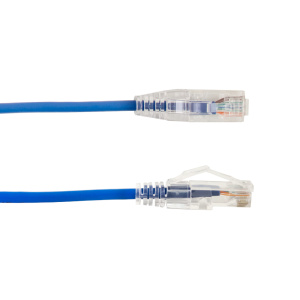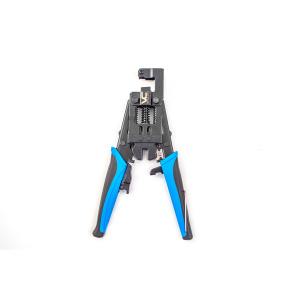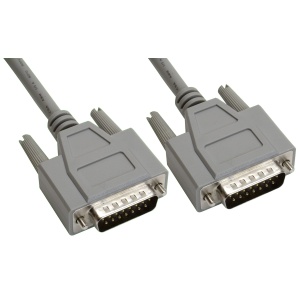Introduction
We’re stepping into an electrifying era where the world is increasingly powered by complex systems and technologies. Ever wondered what makes the crux of these systems? The answer is cables. And not just any cables, but the robust, the reliable, and the versatile ‘Shielded Tray Cable’. In this guide, we’ll explore ‘What is Shielded Tray Cable and How to Install It?’
I. Decoding Shielded Tray Cable
In layman’s terms, a shielded tray cable is a type of electrical cable developed for installations with moderate to high ambient EMI (Electromagnetic Interference). This specialized cable serves as the bridge of safe and reliable transmission of power, control, and communication signals.
1. Anatomy of a Shielded Tray Cable
A shielded tray cable is more than just a wire. It’s an ingeniously engineered conduit for efficient and protected signal transmission. Here’s a detailed breakdown of its structure:
- Conductor: The conductor is the ‘electrical highway’. It’s often made of high conductivity materials like copper.
- Insulation: Encasing the conductor is the insulation layer, often made from materials like PVC or Polyethylene. This layer prevents electrical leakage and protects the conductor from environmental factors.
- Shielding: The shield is a conductive layer wrapped around the insulation. Its purpose is to block external electromagnetic interference from disrupting the signal in the conductor.
- Jacket: This is the external layer, providing physical protection and often imparting flame-resistant properties to the cable.
2. Why Use Shielded Tray Cable?
You might be thinking, “Why go through the hassle of using shielded tray cables?” Good question. Let’s dive into its main advantages:
- Reduction in EMI: EMI can degrade the quality of electrical signals. The shielding in these cables ensures the integrity of signal transmission.
- Robustness: With their rugged construction, these cables are built to withstand harsh environments, including exposure to chemicals, oils, and extreme temperatures.
- Versatility: These cables find applications in numerous industries such as manufacturing, data centers, automation, and more.
II. Choosing the Right Shielded Tray Cable
Like any product, not all shielded tray cables are created equal. Understanding what to look for when choosing one can make the difference between a well-oiled machine and a disaster waiting to happen.
1. Understand Your Needs
Different applications call for different types of shielded tray cables. Factors to consider include the nature of the signal being transmitted, the ambient EMI level, the environment of installation, and relevant safety standards.
2. Know Your Specifications
Key specs include conductor material, insulation and shielding material, the overall diameter of the cable, voltage rating, temperature rating, and fire resistance.
3. Vendor Reputation
Always buy from reputable vendors who provide clear product specs, warranty, and support.
III. Installation 101: Shielded Tray Cable
Well, now that we’re through the what and the why, let’s dive into the how. ‘How to install shielded tray cables?’
1. Planning the Route
The first step is to plan the route for the cable. Consider the shortest path while avoiding potential sources of EMI and physical hazards.
2. Preparing the Cable
Next, prepare the cable by uncoiling it without twisting. Make sure to use a cable stripper to remove the jacket andexpose the shielded wires without damaging them.
3. Laying the Cable
Now, it’s time to lay the cable in the tray or conduit. Ensure the cable isn’t tightly bent or stretched.
4. Grounding the Shield
A crucial part of the installation is grounding the shield at one end. This helps to prevent circulating currents in the shield and maximize its effectiveness.
5. Making the Connections
Finally, make the connections as per the circuit diagram. Ensure the insulation is correctly stripped and the terminations are secure. Always double-check your connections to prevent potential issues.
IV. Maintenance and Troubleshooting
Installing the shielded tray cable is half the battle. Ensuring its longevity requires regular maintenance and efficient troubleshooting.
1. Regular Inspections
Periodic visual inspections can help identify potential issues such as physical damage to the cable, loose connections, corrosion, etc.
2. Testing for Continuity and Insulation Resistance
These tests can help identify any breaks in the conductor or degradation in insulation, respectively.
3. Troubleshooting Common Issues
Knowing how to troubleshoot common issues such as signal loss, electrical noise, and grounding problems can save time and resources.
V. Safety Considerations
Remember, working with electricity is no child’s play. Prioritize safety at all times!
1. Use the Right Tools
Always use tools rated for electrical work. Avoid using damaged or improvised tools.
2. Protective Gear
Wear appropriate personal protective equipment such as insulating gloves, safety glasses, and fire-resistant clothing.
3. Follow Regulations
Adhere to local and national electrical codes and standards. When in doubt, consult a professional!
FAQs
1. What is Shielded Tray Cable? A shielded tray cable is a type of electrical cable designed to resist electromagnetic interference and ensure efficient signal transmission.
2. Why Should I Use Shielded Tray Cable? Shielded tray cables reduce electromagnetic interference, are robust, and offer versatile use across numerous industries.
3. How to Install Shielded Tray Cable? Installation involves planning the route, preparing the cable, laying it in the tray, grounding the shield, and making the connections.
4. What are Some Safety Tips when Installing Shielded Tray Cables? Always use the right tools and protective gear. Adhere to local and national electrical codes and standards.
5. How to Maintain and Troubleshoot Shielded Tray Cables? Regular inspections and tests for continuity and insulation resistance are essential. Familiarize yourself with common issues and their solutions.
6. What Factors Should I Consider When Choosing a Shielded Tray Cable? Consider your specific needs, the specifications of the cable, and the reputation of the vendor.
Conclusion
Understanding ‘What is Shielded Tray Cable and How to Install It?’ is no longer a mystery, is it? This robust and versatile cable, designed to battle the trials of EMI, is a key component in today’s technologically advanced world. Whether you’re installing it, maintaining it, or troubleshooting it, always remember to prioritize safety. Here’s to a future with efficient and interference-free signal transmission!












